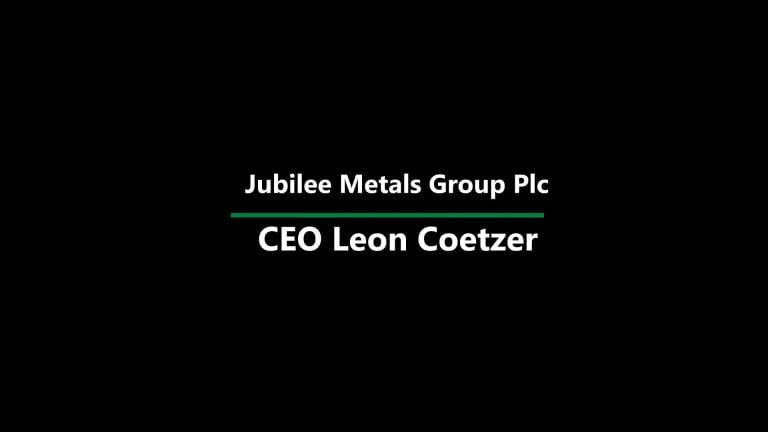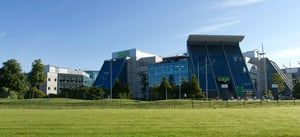Jubilee Metals Group plc (LON:JLP), a diversified metals producer with operations in Zambia and South Africa, has provided an update on the implementation of its Copper Strategy in Zambia.
The Zambian Copper strategy is centred around an initial processing capacity target of 25 000 tonnes of copper per year, supported by two key operational sites: the integrated Sable Refinery (Sable) and the upgraded Roan Concentrator (Roan). The Company aims to fully utilise this capacity by bringing its secured copper resources into production through open-pit mining operations and the reprocessing of surface waste.
A crucial factor for successfully executing the Copper Strategy was securing a stable power supply, a significant challenge in Zambia. The Company has announced that its recently signed power purchase agreement with Lunsemfwa Hydro Power Company (LHPC) which has been implemented, with uninterrupted power being delivered to Jubilee’s operations as of last week covering all of its processing plants’ power requirements with 100% renewable power.
Highlights
· Stable power supply to Zambian operations commenced after successfully implementing the LHPC agreement on 18 September 2024.
· Roan front-end module has achieved design capacity, and operations have been handed over to the Roan operational team.
· Munkoyo open-pit operations began ramping up, targeting to reach 15 000 tonnes of run-of-mine ore per month comprising 5 000 tonnes of 3.0% high-grade copper ore delivered direct to the Sable Refinery while the sub 1.0% lower grade copper ore is being stockpiled at site for further processing.
· Large Waste Rock project, with over 260 million tonnes of surface rock, is set to begin a commercial trial of 15 000 tonnes processed through Roan’s front-end module in November 2024 as part of the final due diligence review.
Leon Coetzer, CEO of Jubilee Metals Group commented:
“I am pleased to provide this update on the progress of the implementation of our Copper Strategy in Zambia. Establishing a stable power supply was crucial to maintaining steady progress in our projects. The frequent rolling outages posed an ongoing risk to the stability of our operations, so I am grateful that we have now secured a reliable, continuous power source. This has been a critical factor in achieving design throughput at our new Roan front-end module.
With upgrades at our Roan Concentrator and Sable Refinery, we are well-positioned to achieve our initial target processing capacity of 25 000 tonnes of copper per year. The recent milestones, including the ramp-up of our Munkoyo open-pit operation, near completion of our due diligence of Project G, which if successful will be brought into operation within 4 months, ensure a continued upward drive in our copper output. Our discussions to secure a further two open pit opportunities are progressing well and I am confident in our ability to secure further similar opportunities.
We are nearing the completion of due diligence for our Waste Rock project, with the distinct advantage of conducting a full-scale commercial trial using our new Roan front-end module.
We are optimistic about the future and remain focused on bringing our secured copper resources into production as we fully utilise our expanded processing capacity. I look forward to keeping the market updated on all developments as they unfold.”
Implementation of Processing Capacity
The increased processing capacity of 25 000 tonnes of copper per annum will be achieved through upgrades to both the Roan Concentrator and the Sable Refinery.
The Roan Concentrator upgrade is now complete, with its front-end module reaching design throughput of 45 tonnes per hour of waste rock feed for an 8-hour continuous period under the supervision of the Jubilee technical team. This milestone has enabled the handover of operations to the Roan operational team to operate the plant on a 24-hour continuous period.
Additionally, the commencement of stable power supply through the LHPC agreement ensures continuous operation of Roan’s front-end module targeting to achieve 30 000 tonnes per month feed rate. Roan’s front-end module production is expected to start reflecting in the production of Q4 CY2024 as it commences to operate continuously which is in-line with the Company’s copper production forecast.
Roan is now capable of processing both historically mined low grade stockpiled material and previously processed materials simultaneously, with a combined capacity of its front-end module as well as milling and flotation plant of up to 13 000 tonnes of copper per annum (4 500 and 8 500 capacity respectively), depending on the feed grade. Roan will initially be dedicated to processing waste from historical mining operations, upgrading copper materials into a saleable concentrate that can either be sold on the market or further refined at Sable, depending on Sable’s available capacity.
The planned Sable Refinery upgrade marks the final stage in reaching the initial target of a combined 25 000 tonnes of copper processing capacity per annum. This upgrade includes enhancements across several areas of the refinery, culminating in the commissioning of a second tank house for copper cathode plating. Upon completion, Sable will be capable of producing both copper sulphide concentrates and copper cathode, with a combined output of 16 000 tonnes per annum. The upgrade is currently underway and expected to be fully integrated into the existing operations over the next 10 months with an expected capital investment of US$9 million, confirming the processing capacity of 25 000 tonnes annually. The Company’s focus is now shifting towards bringing secured copper resources into full production to fully utilise this upgraded capacity in line with the production forecast which assumes that the impact of the capacity upgrades will reflect during H2 FY2025.
Copper Resources
Open Pit Mining Operations
Jubilee Metals acquired a 95% interest in the Munkoyo mine, which is located within 55 kilometres of the Sable Refinery, in June 2024 and proceeded to develop an open pit mining operation to access the near surface weathered copper reefs.
The Munkoyo open-pit mining operations yield high-grade copper ore, which is transported directly to Sable, as well as lower-grade copper ore that is stockpiled on-site for further processing at a regional processing hub (discussed further below). The high-grade ore, with a target copper content of 3.0%, is refined at Sable. Munkoyo commenced operations in July 2024 and continues to ramp up to an initial target of 15 000 tonnes per month of run-of-mine of which 5 000 tonnes per month are to be delivered directly to Sable for refining. Munkoyo remains on track to reach its initial target of 15 000 tonnes per month mined run-of-mine ore by December 2024.
A resource drilling program is currently underway, and depending on the confirmation of resource continuity, will target the potential to increase production to 20 000 to 25 000 tonnes of run-of-mine ore per month.
The decision on the capacity of the regional processing hub is currently under-review and subject to the completion of the technical development program which is expected to be completed over the coming 4 months. The regional hub will focus on upgrading the mined and currently stockpiled lower grade copper reef (sub 1.0%). This material will then be transported as a high grade copper concentrate to Sable which could potentially double the copper output from Munkoyo delivered to Sable. This approach would be replicated for all the open cast mining operations that Jubilee targets for acquisition.
Project G is the second open-pit mining operation being evaluated by Jubilee. The Company is nearing the completion of its due diligence, which has included full-scale processing trials at the Sable Refinery. A final decision on Project G is anticipated by the end of September 2024. The due diligence focuses on an initial mining rate of 10 000 tonnes per month achievable by February 2025, with an existing on-site upgrading facility of the run-of-mine material which already can produce 3 000 tonnes of copper concentrate per month, containing 10% to 15% copper, for refining at Sable. The lower grade copper reef will initially be stockpiled at source for future processing through the regional processing hub.
Jubilee is also in advanced discussions regarding two additional open-pit mining opportunities in the Munkoyo and Project G region, as it aims to fully dedicate Sable’s 16 000 tonne per annum copper refining capacity to processing open-pit mining resources. Jubilee has set a goal to achieve this by December 2025.
Previously Mined Waste Rock
Roan has begun processing low grade stockpiled material from historical mining operations through its newly commissioned front-end module. The module is designed to upgrade the waste rock material more than tenfold, producing a high-grade copper concentrate in excess of 10% copper contained for further refining or market trading. Additionally, the plant generates a lower-grade copper stream that requires further processing. The Jubilee technical team is currently evaluating various metal extraction techniques to refine this waste stream, with a preference for on-site flotation and leaching. The review includes exploring the use of glycine-based heap leaching in partnership with Draslovka, a mining processing specialist. A semi-commercial trial for flotation and on-site leaching of the low-grade copper stream is scheduled for February 2025.
The large Waste Rock Project, with an estimated 260 million tonnes of surface material, is currently undergoing its final technical review. As previously announced, Jubilee has secured the rights to the extensive waste rock stockpile, pending the successful completion of due diligence to Jubilee’s satisfaction, in partnership with International Resources Holding (IRH) from Abu Dhabi.
The due diligence of the copper waste rock material undertaken by Jubilee has included various sampling campaigns as well as laboratory and pilot scale test programs to confirm the upgradability. In parallel to the test program, Jubilee Metals entered into agreements to accelerate delivery timelines of key long lead items.
Jubilee has reached agreement to extend the due diligence period to 6 November 2024 to accommodate the extensive test program which culminates in a full commercial trial of the large Waste Rock Material through the newly commissioned Roan front-end module. It is planned to process approximately 15 000 tonnes of the material at Roan as final confirmation of the response of the material to the proposed processing solution. Due to the initial delays in the commissioning of Roan it is expected that the due diligence period will be extended to January 2025 subject to agreement reached to ensure sufficient time to complete the commercial trial and allow the Jubilee technical and commercial team to complete the review of the results.
To date, US$4.95 million has been advanced to secure the rights to the large Waste Rock Project, as part of the overall acquisition price of US$30 million, payable quarterly over 18 months, contingent on the successful completion of the due diligence period. According to the terms of the agreement, Jubilee will forfeit the payments made thus far if it decides not to proceed with the project. The successful completion of due diligence is a critical factor in maintaining Jubilee’s partnership with IRH.
The scale of the large Waste Rock Project indicates the need for four processing modules similar to the Roan front-end module, requiring an estimated capital investment of around US$50 million subject to funding. Preliminary production estimates suggest that these modules could collectively produce approximately 2 000 tonnes of copper per month.
An accelerated construction schedule for all four modules could generate economies of scale and significant cost reductions. The project timeline for implementing all four modules depends on the sequencing of their installation, but through the establishment of strategic partnerships with the suppliers of key long lead items, modules could be completed within a 12-month period from the commencement of construction.
The figures above serve only as indicative numbers of the potential that the resource holds based on the assumptions and test work undertaken by Jubilee’s technical services department and the successful completion of the due diligence which includes the commercial trial at Roan.
Background Information on LHPC
LHPC is an established independent power producer in Zambia that owns and operates two hydropower plants in the central province. LHPC is a member of the Southern Africa Power Pool and an active power trader in the regional market. LHPC is building a 20MW solar plant and plans to use its portfolio of renewable power sources to meet Jubilee Zambia’s power requirements. The agreement highlights Jubilee’s dedication to sustainable energy practices. The power will be supplied from an integrated solar power and hydro-storage facility which is expected to be brought into operation over the coming 12 months. Under the agreement all of the current power needs of both Sable and Roan will be supplied via the LHPC agreement.











































